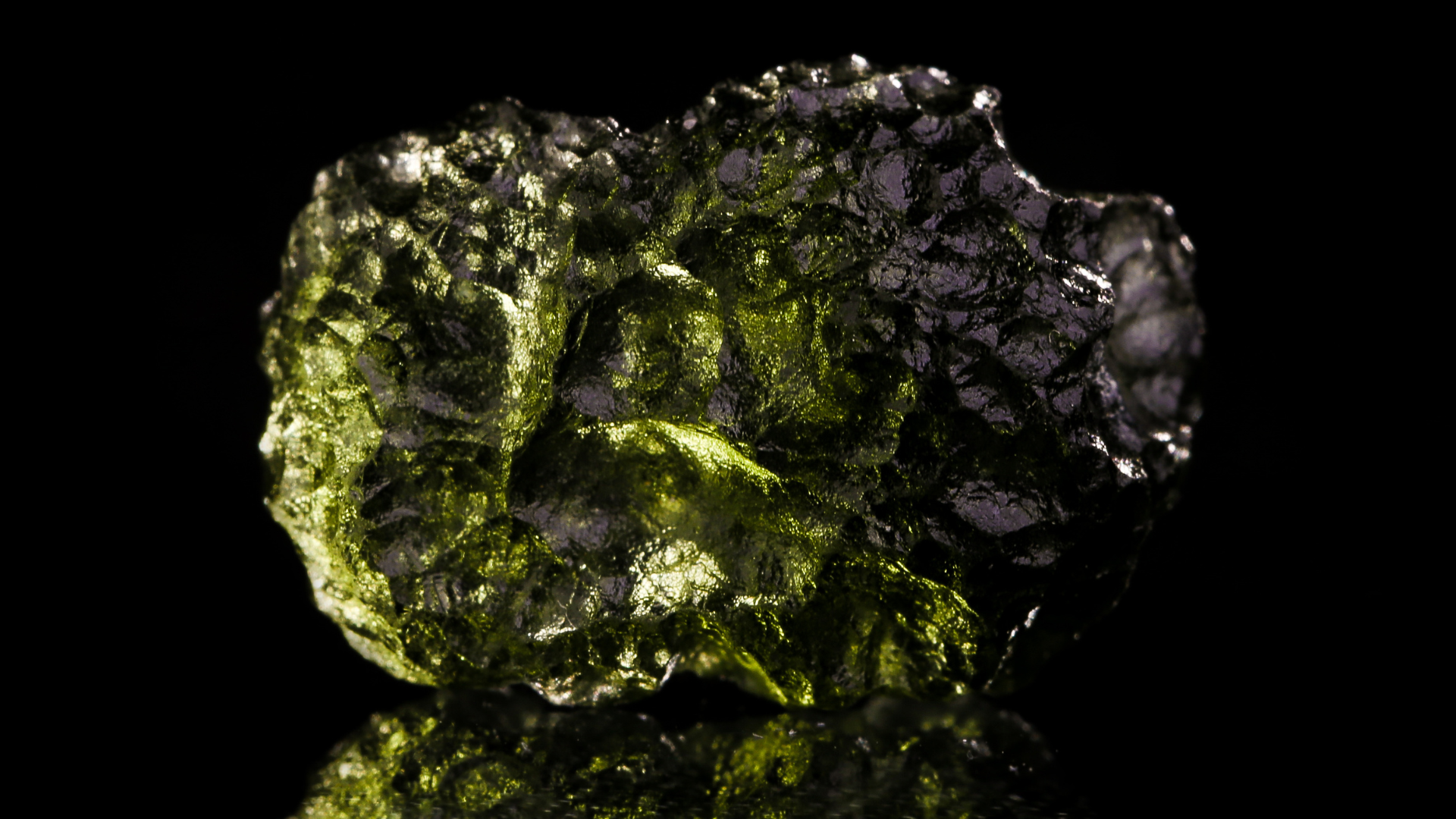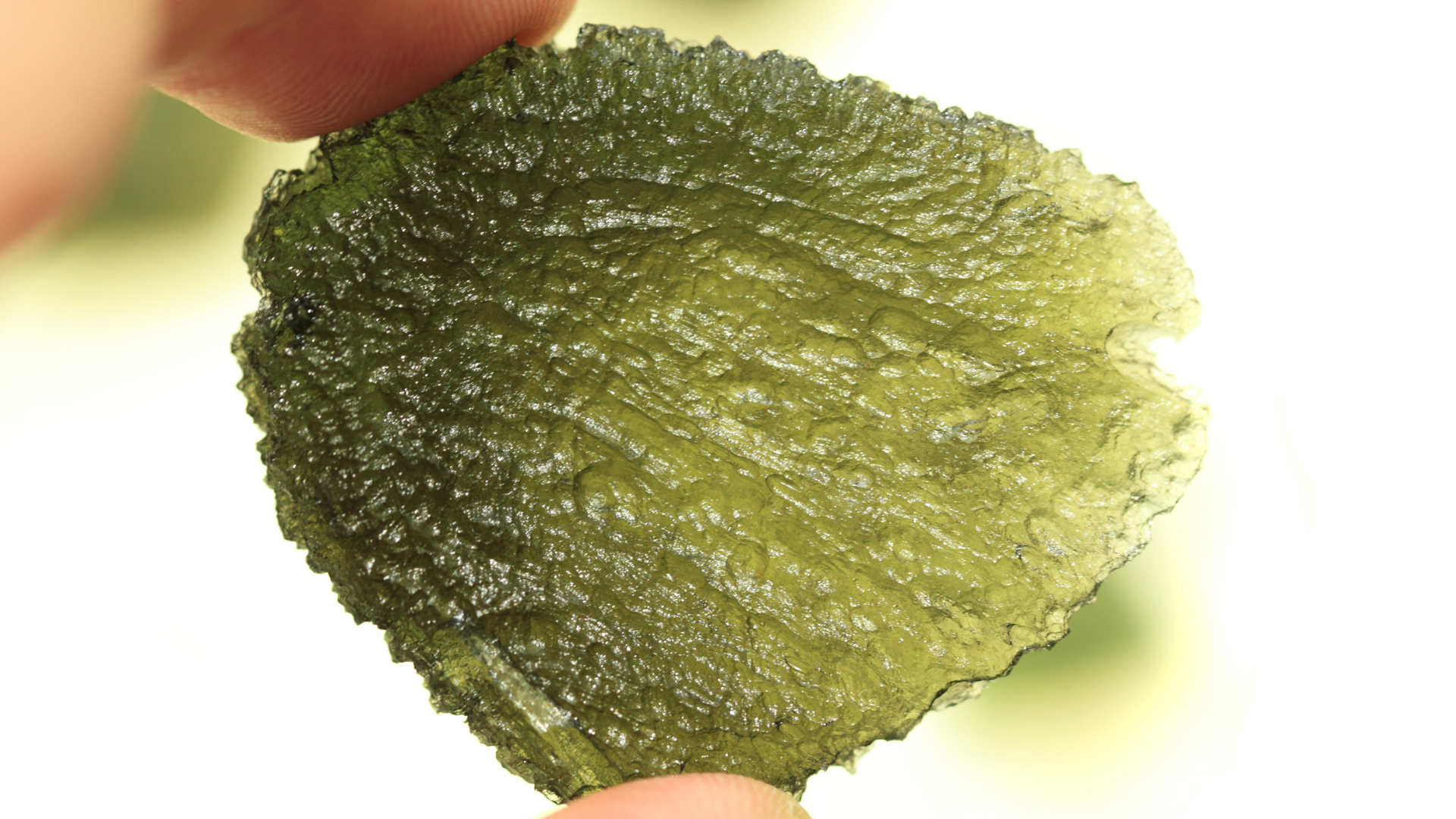
In the realm of precious stones, Moldavite stands as a mysterious and unique gem that captivates the hearts of collectors and enthusiasts alike. With its otherworldly appearance and intriguing origin, Moldavite has become a sought-after crystal in the world of gemology. In this article, we will delve into the depths of Moldavite, exploring its defining characteristics, origin, and the allure that surrounds this cosmic gem.
What is Moldavite?
Moldavite is a type of tektite, a group of glassy rocks formed from terrestrial debris ejected during a meteorite impact. What makes Moldavite particularly special is its association with a massive impact that occurred around 15 million years ago in southern Germany. The intense heat and pressure generated by this impact fused the terrestrial material with the extraterrestrial, creating a unique green gemstone that we now know as Moldavite.
Appearance and Distinctive Features of Moldavite
Moldavite is renowned for its vibrant green color, which ranges from pale to deep forest green. Its surface is often textured, resembling the rippling patterns of melted glass. The gem is characterized by its irregular shapes and unique surface features, giving each specimen an unmistakable identity. Moldavite crystals can vary in size, with some being small and suitable for intricate jewelry, while others are larger and display more pronounced textures.
One of the distinctive features of Moldavite is its pitting and etching, caused by the rapid cooling of molten material during its formation. These surface irregularities contribute to the gem's allure, creating an intricate and mesmerizing landscape on each piece.

Authenticity and Genuine Moldavite
Due to its popularity, the market is flooded with imitations and fakes claiming to be Moldavite. To ensure the authenticity of Moldavite, it is crucial to purchase from reputable sources. Genuine Moldavite is a rare and precious gem, and its value lies not only in its beauty but also in its unique origin. Authentic Moldavite is typically accompanied by a certificate of authenticity, providing details about its origin and characteristics.
Where Does Moldavite Come From?
Moldavite derives its name from the Moldau River in the Czech Republic, where the first discovered pieces were found. While the impact site is in southern Germany, Moldavite has primarily been found in the southern regions of the Czech Republic. The gem has also been discovered in small quantities in Germany and Austria.
The Czech Republic, with its rich geological history, has become a treasure trove for Moldavite hunters. The gem is often found in the form of small stones scattered across the fields, riverbeds, and forests. Moldavite's connection to this region adds a layer of cultural and historical significance to its already mystical allure.
The Formation of Moldavite
The formation of Moldavite is a testament to the cosmic forces that shaped our planet millions of years ago. The gem's origin can be traced back to a massive meteorite impact, estimated to be around 15 million years ago. The impact generated intense heat and pressure, causing the terrestrial material in the region to melt and fuse with the extraterrestrial material from the meteorite.
As the molten material cooled rapidly, Moldavite crystals began to form. The unique conditions of this cosmic event gave rise to a gemstone with unparalleled beauty and energy. Moldavite is often associated with transformative and spiritual properties, believed by many to carry the energy of the cosmos itself.
Moldavite, with its cosmic origins and distinctive features, is a gemstone that transcends the ordinary. Its vibrant green color, textured surface, and connection to a celestial event make it a prized possession for collectors and spiritual seekers alike. As you embark on a journey to explore the world of gemstones, let Moldavite be your guide to the mysteries of the cosmos, encapsulated in a mesmerizing green gem.
